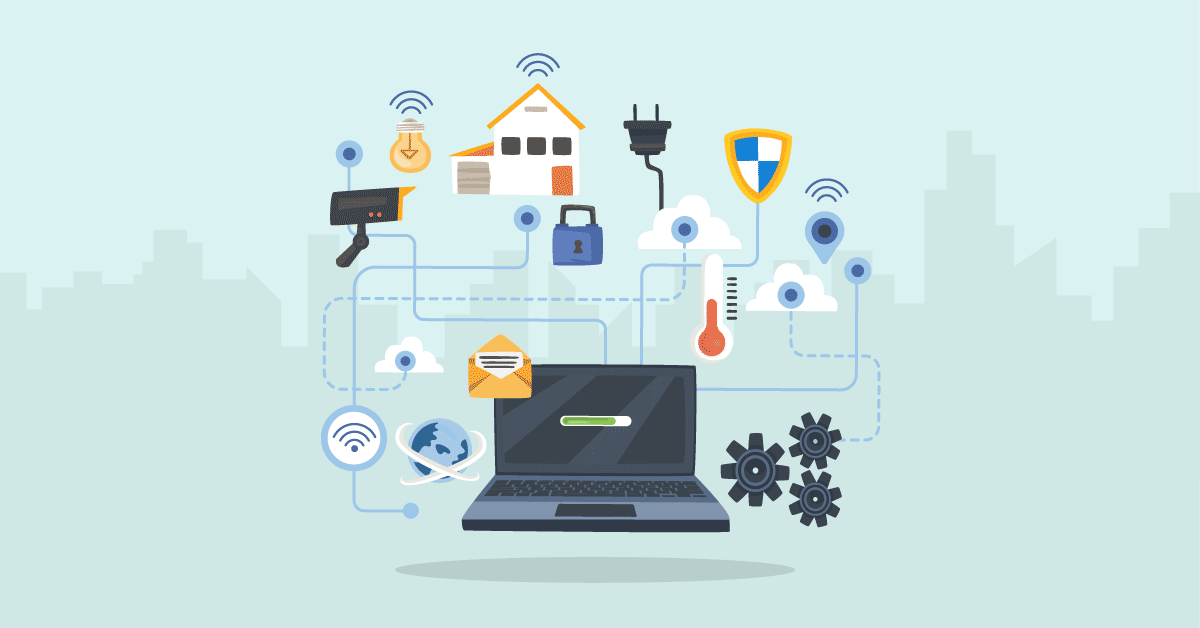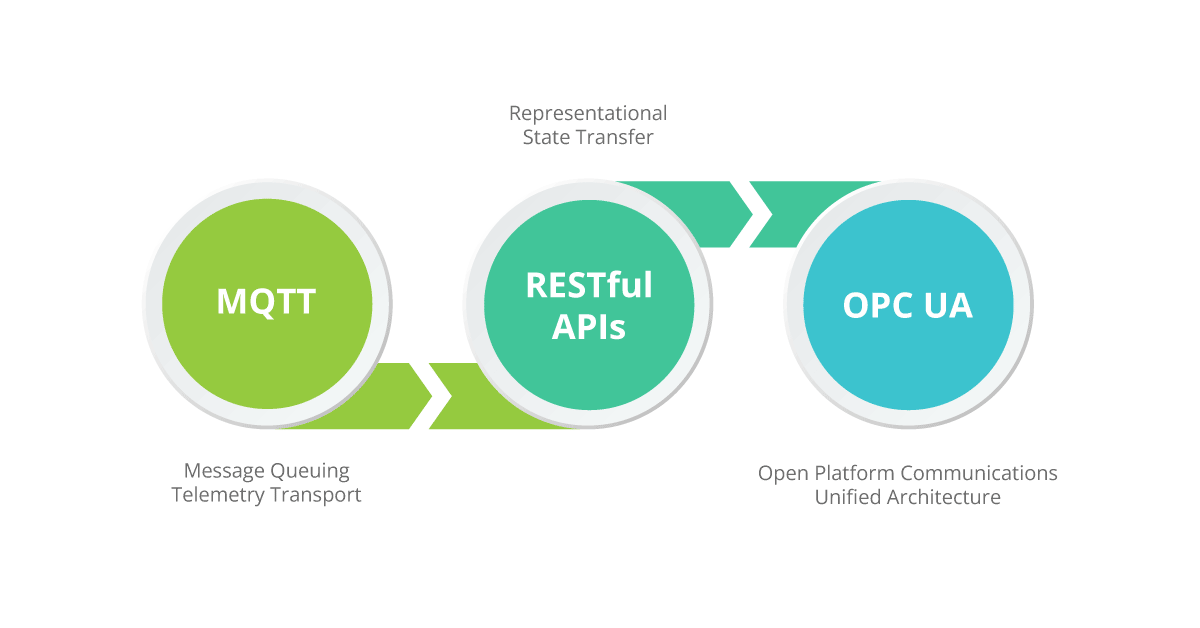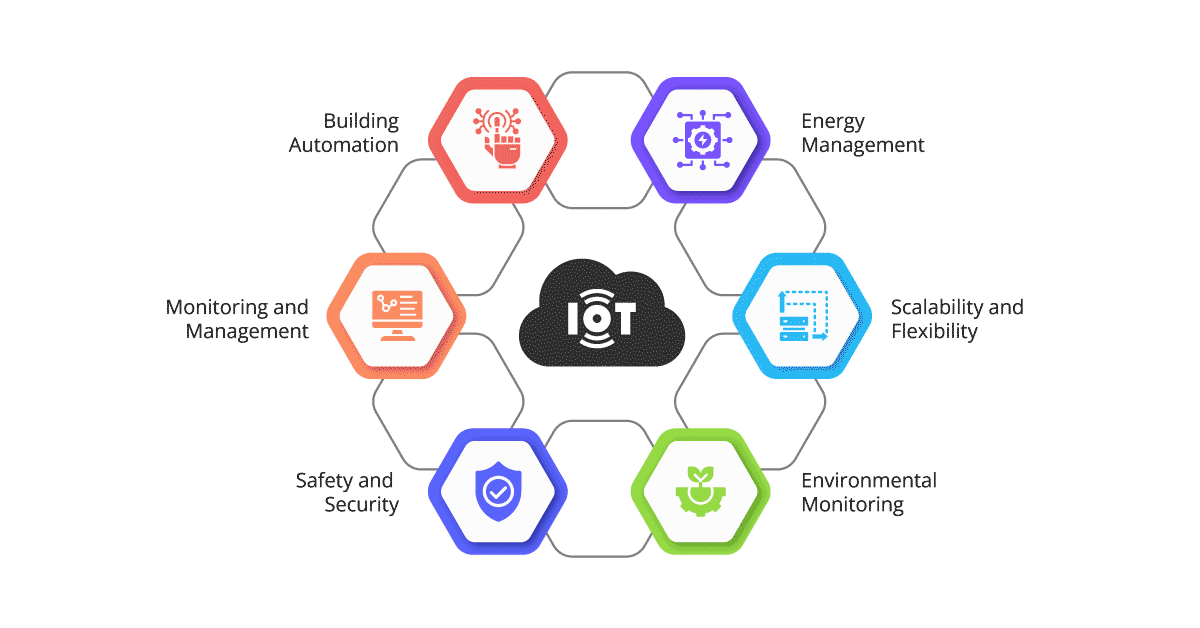In today’s interconnected world, the Internet of Things (IoT) has emerged as a transformative force, revolutionizing industries and empowering innovative solutions. At the heart of this technological revolution lies the seamless integration of devices and systems, enabling smart solutions that enhance efficiency, productivity, and user experience. In this article, we will delve into the significance of integration for IoT, exploring its potential, use cases, and the role of Integration Platform as a Service (iPaaS) in connecting diverse components. So, let’s embark on a journey into the world of IoT integration and discover its transformative power.
Aonflow iPaaS – Free for First 3 Months!
Build and run up to 1,500 transactions monthly with no cost. No payment info needed!
The Importance of Integration in IoT
In the realm of IoT, integration serves as the backbone that enables devices, systems, and applications to communicate and collaborate seamlessly. Without integration, IoT would be reduced to fragmented islands of data, rendering its potential limited. Integration bridges the gap between devices, creating a cohesive ecosystem where data flows smoothly, allowing for efficient decision-making and automation.
The significance of integration becomes evident when considering various IoT use cases:
Smart Home Automation:
The integration allows devices within a smart home ecosystem to work together, creating an environment that responds to users’ needs and preferences. For example, a connected thermostat can receive data from motion sensors and adjust the temperature accordingly. Smart lights can be synchronized with door sensors to automatically turn on when someone enters a room, ensuring energy efficiency and convenience.
Industrial Automation:
In industrial settings, integration enables the seamless coordination of machines, sensors, and systems, leading to enhanced productivity and operational efficiency. For instance, in a manufacturing plant, IoT integration can enable machines to communicate real-time production data to a central system. This data can be analyzed to optimize production schedules, reduce downtime, and proactively address maintenance issues.
Healthcare Monitoring:
Integration in healthcare enables remote patient monitoring and real-time data sharing between medical devices, wearable sensors, and healthcare providers. For example, IoT integration allows continuous monitoring of patient’s vital signs and the transmission of data to healthcare professionals. This enables timely interventions, remote diagnosis, and improved patient outcomes.
Integration Technologies and Protocols
Several technologies and protocols play a vital role in enabling integration for IoT. These include:
MQTT (Message Queuing Telemetry Transport):
MQTT is a lightweight messaging protocol that facilitates communication between devices and systems. It ensures reliable and efficient data exchange, making it an ideal choice for IoT applications with limited bandwidth and power constraints.
Example Use Case: In agriculture, farmers can use MQTT to collect real-time data from sensors monitoring soil moisture levels. This data can then be transmitted to a central system, enabling farmers to make informed irrigation decisions and optimize crop yield.
RESTful APIs (Representational State Transfer):
RESTful APIs provide a standardized way for devices and systems to interact over the internet. They enable seamless integration by allowing applications to request and exchange data using common protocols like HTTP.
Example Use Case: In the healthcare industry, wearable devices equipped with RESTful APIs can transmit vital signs and health data to electronic health records. This integration enables healthcare professionals to monitor patients remotely and respond promptly in case of emergencies.
OPC UA (Open Platform Communications Unified Architecture):
OPC UA is a widely adopted industrial communication protocol for IoT integration in manufacturing and automation. It provides a secure and interoperable framework for exchanging data between different industrial devices and systems.
Example Use Case: In a smart factory, OPC UA enables seamless integration between various production lines components, such as PLCs (Programmable Logic Controllers), robots, and SCADA (Supervisory Control and Data Acquisition) systems. This integration enables real-time data sharing, predictive maintenance, and optimized production processes.
Aonflow is the leading integration platform.
You can kick-start by integrating your first-ever workflow in just a matter of minutes.
The Role of iPaaS in IoT Integration
Integration Platform as a Service (iPaaS) emerges as a powerful tool for simplifying and accelerating the integration process for IoT applications. iPaaS provides a cloud-based platform that enables the seamless connection of diverse components, such as devices, applications, and data sources.
Simplified Data Transformation and Mapping:
Aonflow iPaaS platform offers intuitive visual interfaces and pre-built connectors that streamline the mapping and transformation of data between different formats, protocols, and systems. This simplifies the integration process and reduces the need for complex coding and customization.
Example Use Case: An eCommerce company can leverage iPaaS to integrate its online store with a warehouse management system. This integration ensures that inventory levels are automatically updated in real-time, enabling accurate stock management and reducing the risk of overselling.
Scalability and Flexibility:
iPaaS solutions provide the scalability and flexibility required to handle the growing complexity and volume of IoT integration. They can accommodate a wide range of devices, protocols, and applications, ensuring smooth interoperability and future-proofing IoT deployments.
Example Use Case: A smart city project involves integrating multiple systems, such as traffic management, waste management, and public safety. iPaaS can enable seamless integration between these systems, allowing real-time data sharing and coordinated actions for efficient urban management.
Monitoring and Management:
iPaaS platforms often offer monitoring and management capabilities, allowing users to track the health, performance, and usage of integrated components. Real-time insights and analytics empower businesses to proactively address issues and optimize their IoT deployments.
Example Use Case: An industrial IoT solution relies on iPaaS for integrating machines, sensors, and production systems. The platform’s monitoring capabilities enable predictive maintenance, flag anomalies in machine performance, and minimize unplanned downtime.
Energy Management:
The integration enables smart energy management systems that optimize energy consumption based on real-time data. For instance, IoT integration can connect smart meters, renewable energy sources, and building automation systems to monitor energy usage and make adjustments for efficiency and cost savings.
Example: A commercial building integrates its energy management system with IoT devices, such as smart thermostats, occupancy sensors, and lighting controls. By analyzing occupancy patterns and adjusting temperature and lighting settings accordingly, the system reduces energy waste during unoccupied periods, resulting in significant energy savings.
Fleet Management:
IoT integration allows for real-time tracking, monitoring, and optimization of fleet operations. Integration can connect vehicles, GPS systems, and logistics platforms, enabling efficient route planning, fuel optimization, and proactive maintenance.
Example: A delivery company integrates its fleet management system with GPS trackers installed in vehicles. The integration enables real-time tracking of each vehicle’s location, route optimization based on traffic conditions, and fuel consumption monitoring. This leads to improved delivery efficiency, reduced fuel costs, and timely maintenance to prevent breakdowns.
Retail Analytics:
Integration of IoT devices, such as beacons and RFID tags, with retail systems, can provide valuable insights into customer behavior and preferences. This data can be used to personalize shopping experiences, optimize inventory management, and improve targeted marketing campaigns.
Example: A retail store integrates IoT beacons throughout the store to track customer movements and analyze foot traffic patterns. This integration helps identify popular areas of the store, optimize product placement, and send personalized offers to customers’ smartphones based on their browsing history. These personalized experiences enhance customer engagement and increase sales.
Environmental Monitoring:
Integration of sensors and data collection devices enables comprehensive environmental monitoring for various purposes. For example, IoT integration can facilitate the monitoring of air quality, water quality, noise levels, and weather conditions to support urban planning, pollution control, and disaster management.
Example: An environmental agency integrates air quality sensors placed throughout a city with a centralized monitoring system. The integration collects real-time data on pollutant levels and analyzes it to identify areas with poor air quality. This information helps the agency implement targeted measures to reduce pollution and improve public health.
Smart Agriculture:
IoT integration can revolutionize agriculture by connecting sensors, drones, and irrigation systems. Farmers can gather real-time data on soil moisture, temperature, and crop health to optimize irrigation, minimize water usage, and enhance crop yields.
Example: An agricultural farm integrates soil moisture sensors, weather data, and irrigation systems. The integration allows the farm to automate irrigation based on real-time moisture levels and weather forecasts, ensuring optimal watering for crops. This leads to efficient water usage, improved crop health, and increased yields.
Asset Tracking:
The integration allows for real-time tracking and management of assets across industries. For instance, IoT integration can track and monitor high-value assets in logistics, healthcare, and manufacturing, minimizing loss, ensuring security, and optimizing utilization.
Example: A logistics company integrates IoT tracking devices with its asset management system to monitor the location and condition of packages during transportation. The integration enables real-time tracking, alerts for potential theft or damage, and optimization of delivery routes. This enhances the security and efficiency of the logistics process.
Building Automation:
The integration enables centralized control and automation of building systems, including lighting, HVAC, security, and access control. IoT integration can facilitate energy-efficient operations, occupant comfort, and intelligent security management.
Example: A smart building integrates various IoT devices, such as occupancy sensors, smart thermostats, and access control systems, with a centralized building management system. The integration enables automatic adjustments of lighting and temperature based on occupancy, efficient energy usage, and centralized monitoring and control of security systems. This results in energy savings, improved occupant comfort, and enhanced security.
Predictive Maintenance:
IoT integration can enable predictive maintenance by connecting sensors, equipment, and maintenance systems. Real-time data analysis can identify patterns and anomalies, enabling proactive maintenance, reducing downtime, and extending asset lifecycles.
Example: A manufacturing plant integrates IoT sensors with its maintenance management system to monitor machine health parameters, such as temperature, vibration, and power consumption. The integration enables real-time monitoring and analysis of machine data to detect early signs of equipment failure. This allows the plant to schedule preventive maintenance, avoid unplanned downtime, and optimize equipment lifespan.
Smart Supply Chain:
Integration across the supply chain enhances visibility, efficiency, and collaboration. IoT integration can connect suppliers, manufacturers, distributors, and retailers, enabling real-time inventory management, demand forecasting, and optimized logistics.
Example: An e-commerce company integrates its inventory management system with suppliers, manufacturers, and logistics providers. The integration allows for real-time inventory tracking, automated order fulfillment, and seamless communication between stakeholders. This improves inventory accuracy, reduces stockouts, and streamlines the entire supply chain process.
Waste Management:
Integration facilitates smart waste management systems that optimize waste collection, recycling, and disposal. IoT integration can connect waste bins with sensors, enabling real-time monitoring of fill levels to optimize collection routes and reduce costs.
Example: A city deploys smart waste bins equipped with fill-level sensors that are integrated with a waste management system. The integration enables real-time monitoring of bin fill levels, optimizing waste collection routes based on demand, reducing unnecessary collections, and promoting efficient waste disposal.
Safety and Security:
IoT integration enhances safety and security across various domains. For example, integration can connect surveillance cameras, access control systems, and alarms, enabling real-time monitoring, threat detection, and automated response in critical environments.
Example: An office building integrates surveillance cameras, access control systems, and an alarm system with a centralized security management platform. The integration allows for real-time monitoring of security events, automatic detection of unauthorized access, and immediate alerts and response in case of emergencies. This enhances overall safety and security in the building.
Water Management:
The integration enables smart water management systems that monitor and control water resources. IoT integration can connect water meters, irrigation systems, and water treatment plants, optimizing water usage, detecting leaks, and promoting sustainable water management.
Example: A municipality integrates water meters, irrigation systems, and water treatment facilities with a centralized water management system. The integration enables real-time monitoring of water consumption, automatic detection of leaks, and optimization of irrigation schedules based on weather conditions. This leads to efficient water usage, reduced water loss, and sustainable management of water resources.
These use cases highlight the transformative power of IoT integration across various industries, showcasing how it enables efficiency, cost savings, improved decision-making, and enhanced user experiences.
Final Thoughts
Integration plays a pivotal role in unlocking the true potential of the Internet of Things. By connecting devices and systems, integration enables seamless data flow, collaboration, and automation, resulting in smarter solutions that enhance productivity, efficiency, and user experience. Additionally, iPaaS acts as a crucial enabler, simplifying and accelerating the integration process while providing scalability, flexibility, and management capabilities. As IoT continues to reshape industries and revolutionize our daily lives, the power of integration remains essential for harnessing the full potential of this transformative technology.
Furthermore, integration fosters interoperability and convergence among diverse IoT ecosystems, enabling cross-domain innovation and synergy. The ability to connect and integrate devices, systems, and data from different industries and sectors opens up new possibilities for collaborative solutions and holistic approaches. Whether it’s the convergence of healthcare and wearable technology or the integration of transportation and smart city infrastructure, the seamless connectivity facilitated by integration fuels the emergence of comprehensive, interconnected ecosystems that deliver greater value and impact.
As we continue to embrace the IoT revolution, the importance of integration and its role in connecting devices and systems for smart solutions cannot be overstated. It is through integration that the true potential of IoT is realized, enabling a world of interconnected devices and systems that work together to drive innovation, efficiency, and transformative change.
Aonflow iPaaS – Free for First 3 Months!
Build and run up to 1,500 transactions monthly with no cost. No payment info needed!


